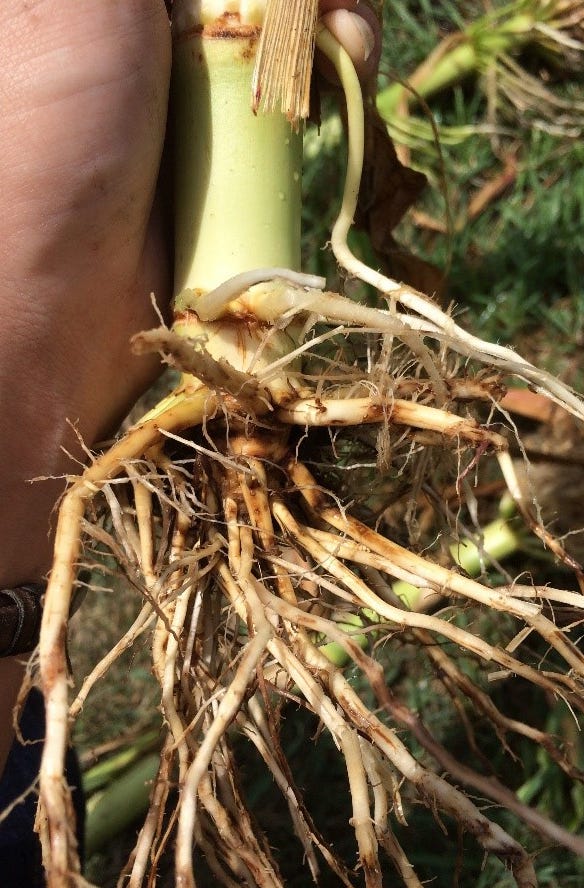July 31, 2018

Western and northern corn rootworm beetles seem to be a constant issue farmers battle across parts of Iowa each year. Several fields this year have been reported to Iowa State University at Ames as having potential Bt trait failures in managing western corn rootworms.
Corn hybrids that contain a Bt trait to resist corn rootworm aren’t always successful in providing protection. Fields with a suspected trait failure need to be checked out, advises ISU Extension field agronomist Meaghan Anderson. Planting a corn hybrid that has a Bt trait to protect against corn rootworm feeding is not a guarantee that you won’t have rootworm problems, especially in fields that have been long-term continuous corn. You need to keep a watchful eye on this, she adds.
Adult corn rootworm beetles lay eggs in fields during summer, and the eggs overwinter in the soil. The eggs that survive winter will then hatch the next spring to produce rootworm larva. The tiny worms chew on roots of continuous corn. Rotating corn and soybeans in a field is recommended as a good practice to manage this insect pest.
Last half of July; first half of August
“Now, in late July and in early August, is a great time to be checking your cornfields for the presence of high populations of adult rootworm beetles, as well as digging some corn roots to check for root feeding,” Anderson says. She offers the following information about rootworm larva identification. Also, see Extension’s Adult corn rootworm identification to look at photos and additional information from Erin Hodgson, ISU Extension entomologist.

WHAT TO WATCH FOR: This farmer's first suspicion of rootworms came from the root-lodged corn in his sixth-year continuous cornfield. He also saw many western corn rootworm beetles lying on leaves and silks, and flying in the field. Roots showed browning and obvious feeding upon close inspection.

In Iowa, the two types of corn rootworm most prevalent are northern corn rootworm and western corn rootworm:
• Northern corn rootworm beetles are typically the smallest of the rootworm beetles at only about a quarter-inch long. They are usually one color with no apparent markings, and can range from a yellow and light green to a darker green. Northern corn rootworm produces one generation per year, but some NCR populations can survive as eggs in the soil for multiple years. This is known as extended diapause, allowing them to adapt to corn-soybean rotations in Iowa.
• Western corn rootworm beetles are slightly larger than northern corn rootworm beetles and have distinctive black markings on their forewings. Typically, the black markings are three obvious lines, but sometimes the black looks more solid (usually on males). Western corn rootworm females can lay eggs in other crops aside from corn, but this variant is rare in Iowa and more common in the eastern Corn Belt. Western corn rootworm is notorious for its development of resistance to Bt traits used to manage rootworm in continuous cornfields.
You can learn more at Approaches for managing corn rootworms and use the Interactive node injury scale to look at the effects of progressive rootworm larvae feeding on corn roots.
Source: Iowa State University
You May Also Like




